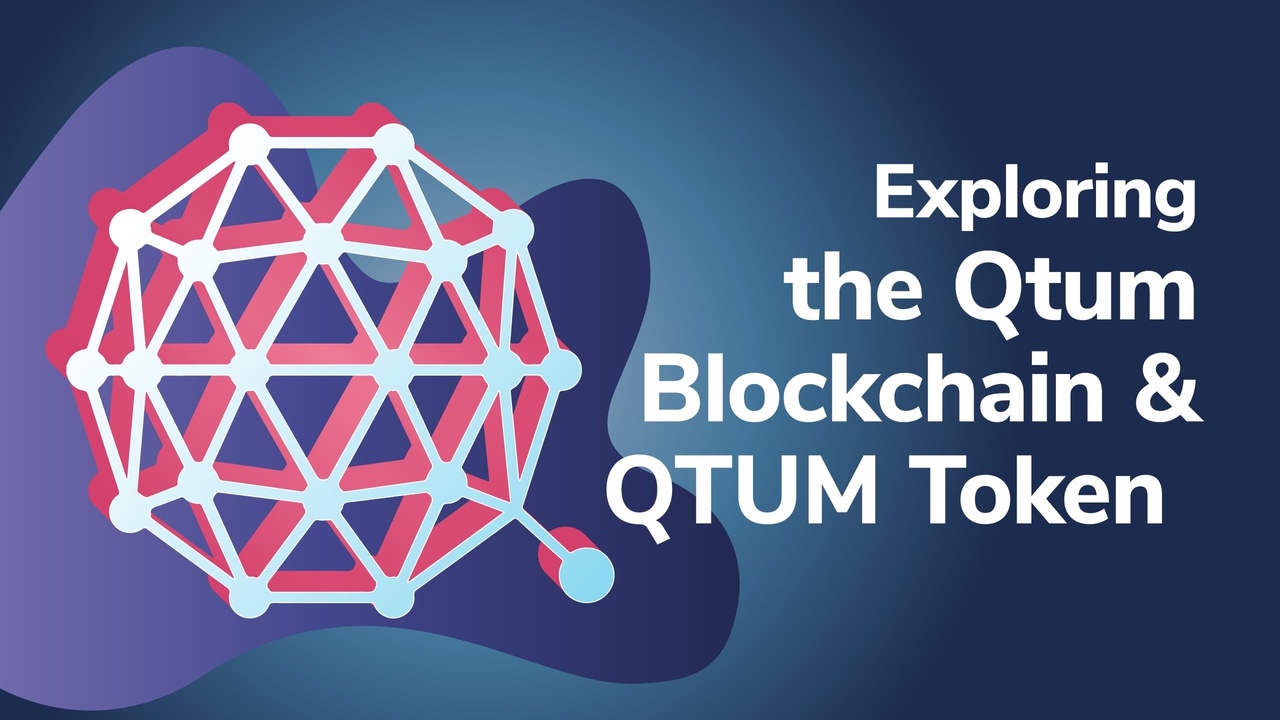
Qtum (pronounced "quantum") is a hybrid blockchain featuring elements of both Proof-of-Work (PoW) and Proof-of-Stake (PoS) consensus mechanisms. The Qtum blockchain is an ecosystem of decentralized applications (dApps) powered by the native QTUM token. These tokens can be stored and transacted using the Qtum wallet. Furthermore, Qtum staking allows users to earn a passive income with crypto in a variety of ways. Established by Qtum Chain Foundation, Qtum is becoming a serious competitor in the crypto industry. However, for those that are wondering, “what is Qtum?” and, “what is the QTUM token used for?” - let us explain!
In this article, we’re going to dive deep into the Qtum crypto ecosystem. Also, we’ll explore the Qtum blockchain, the QTUM token, and the Qtum wallet. Furthermore, we’ll discuss Qtum staking and the many innovative features of the project.
The Qtum crypto ecosystem uses a similar model to the number one blockchain, Bitcoin. To discover how blockchain technology operates on a fundamental level, see our Blockchain & Bitcoin 101 course! We cover distributed ledger technology, mining nodes, hashing algorithms, and UTXOs! Also, to learn more about the backbone of decentralized finance (DeFi) see our Ethereum 101 course. Ivan on Tech Academy has a range of courses available to people of all ages and backgrounds. These courses are designed to help people to understand and start investing or working in blockchain. Join a welcoming community of over 30,000 students today, at Ivan on Tech Academy!
What is Qtum?
Launched in September 2017 by Qtum Chain Foundation, the Qtum blockchain was the first-ever smart contract-enabled blockchain based on the unspent transaction output (UTXO) model like Bitcoin. After several years of development, Qtum now offers a range of services that cater to developers and users of decentralized finance (DeFi), including Qtum staking.

Qtum is an open-source public blockchain that harnesses the power of the Proof-of-Work (PoW) consensus mechanism’s unspent transaction output (UTXO) model while utilizing several virtual machines including the innovative x86 VM. Qtum uses Proof-of-Stake (PoS) functionalities and a Decentralized Governance Protocol (DGP) to enable blockchain settings to be easily adjusted and customized using smart contracts. Where many blockchains would require a hard fork for changes to the protocol, Qtum makes this possible without any of the hassle experienced with some older blockchains.
Furthermore, Qtum provides a sleek, secure, business-friendly environment for developers to build enterprise-ready blockchain solutions and decentralized applications (dApps). These modular apps can easily be integrated into existing IT systems, making it simple for businesses to create customized applications. Below we have covered some of the key features of the Qtum blockchain ecosystem.
Abstract Account Layer (AAL)
This decouples applications that operate on Qtum from the underlying protocol to ensure a high-performing blockchain is maintained. The AAL will also play a key role in facilitating more smart contracts and lending facilities in the future.
Qtum Neutron & x86 Virtual Machine
The combination of Qtum Neutron middleware and x86 Virtual Machine will provide support for the multi-paradigm programming language, Rust. This is along with additional upgrades to help increase the mass adoption of cryptocurrency and smart contracts from a development point of view.
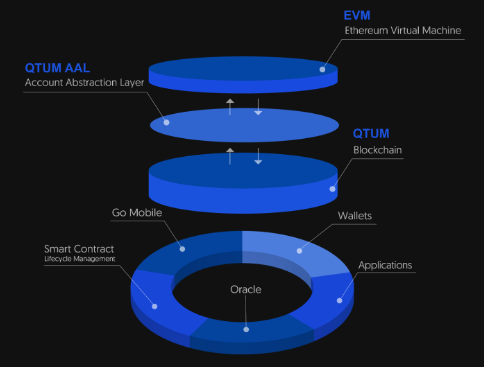
Mutualized Proof-of-Stake Consensus Mechanism
The Qtum crypto platform uses the novel Mutualized Proof-of-Stake (MPoS) consensus mechanism. This reduces the competition for computational power while lowering the barrier for entry in terms of hardware requirements. As a result, the Qtum blockchain can facilitate a high degree of decentralization across its network of distribution nodes.
The MPoS consensus mechanism has enhanced smart contract functionality and reduces the risk of “junk contracts” and attacks that could hinder the performance of the network. Therefore, it costs more to attempt an attack on the network by delaying block reward payments. This is because the block reward payments are divided between miners.
Global Network
Qtum is among the largest peer-to-peer Proof-of-Stake (PoS) blockchain networks, with the total number of full-nodes only surpassed by the networks of Bitcoin and Ethereum.
Wallet Ecosystem
Qtum and the QTUM token are supported by most major cryptocurrency wallets, catering to a broad range of users for various use cases. This is something we will return to further into this article.
Development Resources
The Qtum crypto ecosystem provides all of the tooling and resources needed to create decentralized applications (dApps), smart contract solutions, and other blockchain services. This makes it simple, and cost-effective to get products to market safely and quickly.
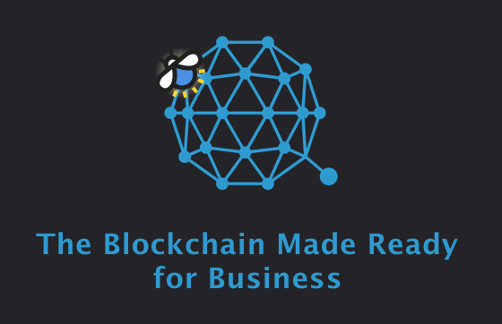
Are you a programmer looking to get into blockchain? With Ivan on Tech Academy, now you can! We have a range of courses covering development across several different blockchains. Start with our Ethereum Smart Contract Programming 101 course to learn the basics of Ethereum’s programming language, Solidity. Then, you could move on to our Ethereum Smart Contract Programming 201 course to discover how to design and deploy your own decentralized exchange (DEX)!
Moreover, to discover how to program on the biggest blockchain in the industry, see our Bitcoin Programming 101 course. Or, to learn how to create applications on Bitcoin’s layer-2 solution, see our Lightning Network & Lightning App Programming course! Alternatively, if gaming is more your thing, see the Unity Blockchain Game Development 101 and Enjin Blockchain Game Development 101 courses for an expert-led video-guided tutorial to creating your own blockchain-based gaming application!
QTUM Token
The native QTUM token, or QTUM coin as it is sometimes referred to, underpins the entire Qtum crypto ecosystem. It is used as a medium of exchange like most other cryptocurrencies and is required for transaction fees on the Qtum blockchain. Also, the QTUM token is used by developers building decentralized applications (dApps) on Qtum.
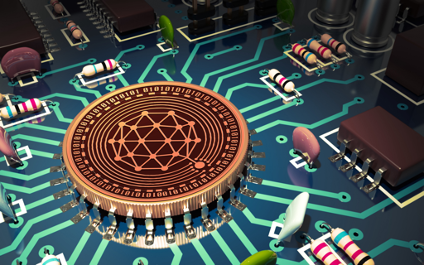
Upon launch, the QTUM token had an initial supply of 100 million. Of these, 51 million QTUM tokens were distributed via a public sale in March 2017. The proceeds of this sale went towards the creation and development of the Qtum Chain Foundation. A further 20 million QTUM tokens were allocated to team members. This includes around 8% for private investors and approximately 12% for the founding team and developers. Furthermore, 29% of all tokens were allocated to community development, academic research, education, and expansion.
Moreover, the Qtum staking mechanism was created by Qtum Chain Foundation to prevent token dumps and promote long-term commitment to Qtum. This is to ensure that the Qtum ecosystem would remain sustainable and healthy.
Qtum Staking
To incentivize stakers or miners, a three-part block reward structure is used to encourage the upkeep of the network. Qtum staking allows users to earn a passive income with the QTUM token from transaction fees, smart contract costs, and a portion of newly mined QTUM tokens issued as block rewards. Initially, the block reward subsidy for QTUM staking began at 4 QTUM per block. This number is halved approximately every four years, similar to Bitcoin.
Furthermore, by the year 2045, the QTUM token block reward subsidy will be reduced to zero. This means that during the first four years of the project, the QTUM token inflation rate, or annual issuance ratio is approximately 1% of the total supply of QTUM. This will also decrease until there is no further issuance, in line with block rewards.
Multi-Wallet Ecosystem
There is a range of different types of crypto wallets to store your QTUM tokens, for mobile, desktop, and hardware wallets. Qtum offers its Qtum Core Wallet as a desktop wallet available on Mac, Windows, and Linux computers. Moreover, the Qtum Electrum is also available as a Mac and Windows desktop wallet, but currently not with Linux.
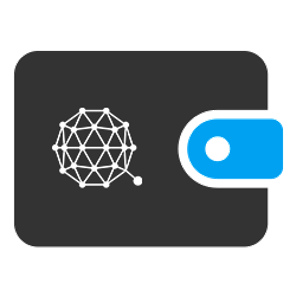
The official Qtum Core mobile wallet is only available through Google Play and Android devices at the time of writing. Further, a broad range of other third-party mobile wallets is compatible, including ABRA, Atomic Wallet, Edge, and Binance’s Trust Wallet.
Finally, there is the option to store your funds through the decentralized web Qtum Wallet. Following the link from the “Qtum Wallet” page on the project’s official website takes you to qtumwallet.org. Here, you can generate a new non-custodial wallet address. Or, the web Qtum wallet also allows users to restore their funds from a hardware or mobile wallet, or key file. Furthermore, QTUM tokens can be securely stored using two of the most reputable hardware wallet brands, Ledger and Trezor.
Governance
The Qtum Chain governance model has two main elements. These are on-chain governance using the Qtum Decentralized Governance Protocol (DGP), and off-chain governance carried out by the Qtum Chain Foundation. This hybrid governance model combines both code-based and human governance to optimize the process of decentralized governance and promote effective decision-making.
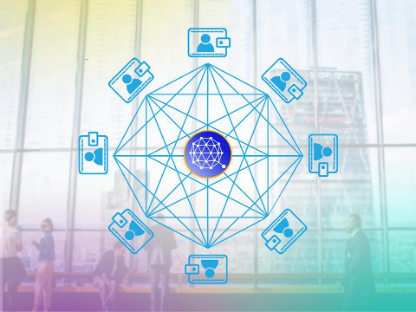
On-Chain Governance Based on DGP
On-chain governance refers to the “negotiation and execution process of the blockchain network update protocol embedded in the Qtum blockchain system”. Below are the key elements of the Qtum Decentralized Governance Protocol (DGP).
Multi-Party Involved On-Chain Governance
Alongside enabling QTUM token holders to take part in voting on proposals to make changes to the Qtum ecosystem, the Decentralized Governance Protocol (DGP) also enables developers, miners, and community representatives to participate in proposals for on-chain governance.
Smart Contract Carriers for On-Chain Governance
The parameters of the Qtum blockchain are managed by the Qtum Decentralized Governance Protocol (DGP) via a series of smart contracts built into the genesis blocks. A proposal to make a change to the protocol can be made by any network participant. Also, participants with governance seats can vote on proposals, approve them, and execute them using smart contracts once approved.

Public and Transparent On-Chain Governance
The DGP features an automatic on-chain governance mechanism that can automate updates to the Qtum blockchain. This is achieved with real-time decision-making and optimal execution mechanisms. Moreover, the on-chain governance system used by Qtum is public, transparent, and easily auditable. This simplifies the governance process while optimizing decision-making without concern for the detriment it might cause to the Qtum network and community.
Qtum Chain Foundation
The Qtum Chain Foundation was established in November 2016. The non-profit company was created to help bootstrap open-source community projects and development using good governance mechanisms. The Qtum Chain Foundation is committed to the development and sustainability of the Qtum blockchain while advocating transparent governance.
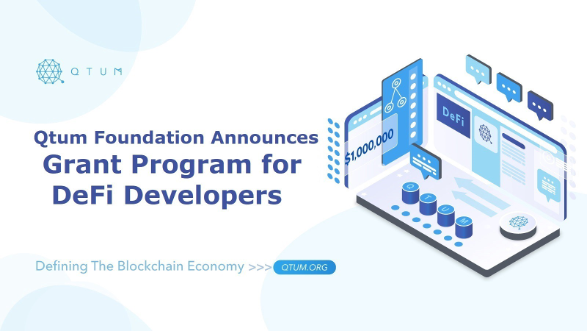
Qtum DeFi Incentive Program
A “DeFi Incentive Program” was launched by the Qtum Chain Foundation, with a total reward of $1 million. This was designed as a way of encouraging developers to build decentralized applications (dApps) on the Qtum blockchain. To participate, applicants must be familiar with the Solidity smart contract programming language, have a good understanding of the technical aspects of Qtum blockchain, and be able to build and deploy DeFi applications.
For our readers with no programming experience, but would like to get involved with blockchain programming, start with our Javascript Programming for Blockchain Developers course. Ivan on Tech Academy provides all the resources and material needed to start creating your own decentralized applications (dApps), regardless of your experience!
Qtum Summary
Launched by the Qtum Chain Foundation, the Qtum blockchain offers a seamless experience for investors, businesses, and developers alike. Qtum blockchain boasts a range of innovative features that make this smart contract-enabled blockchain a popular choice for programmers!
Also, Qtum boasts an engaging and enthusiastic community, in part thanks to the Qtum Decentralized Governance Protocol (DGP). This makes it super easy for the community to propose a protocol update, vote in favor, and implement said update within a relatively short space of time. Additionally, Qtum has set aside $1 million towards community development and investment in the DeFi Incentive Program. This clearly shows the project’s commitment to its user and developer community.
Combining a novel hybrid consensus mechanism with state-of-the-art technologies. Qtum and the QTUM token provide an innovative solution for the modern crypto user with the Qtum staking facility and the Qtum wallet.
Qtum blockchain is an enterprise-ready development landscape for programmers to create blockchain-based business solutions. If you would like to learn how to implement blockchain technology into current business IT systems, see our Blockchain Business Masterclass course at Ivan on Tech Academy. Moreover, to ensure your business remains compliant in this emerging industry, see our FinTech 101 course. Ivan on Tech Academy is the largest online blockchain academy online, why not join today? Make sure to check out our Study Guide for tips on how to achieve the best experience at the Academy! Also, don’t forget to follow us on Twitter @Academy_IOT! We’d love to hear your thoughts about the Qtum blockchain and the QTUM token!
